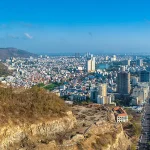Moving through Vietnam offers a mix of contrasts, choices, and unexpected charm. Knowing how to get around Vietnam can make your trip not just easier—but genuinely unforgettable. You might be navigating the buzzing streets of Ho Chi Minh City, heading from Hanoi to the highlands, or planning a boat ride to Phu Quoc or Cat Ba.
Wherever you’re going, the country’s transportation network is more connected and traveler-friendly than ever in 2025. From budget-friendly buses to scenic train rides and fast, reliable ride-hailing apps, Vietnam offers a practical option for every type of traveler.
In this guide, we’ll walk you through the smartest ways to get around. You’ll find tips for city commutes, cross-country routes, price expectations, and booking advice to help you travel like a local.
Let’s break it down.
Table of Contents

Airport Transfers: How to Get from the Airport to the City Center
Most international travelers land in Hanoi (Noi Bai), Ho Chi Minh City (Tan Son Nhat), or Da Nang Airport. Fortunately, getting from the airport to the city center is relatively straightforward in all three.
Ride-hailing apps like Grab and Be are reliable, easy to use, and often cheaper than most airport taxis. Just connect to airport Wi-Fi, open the app, and request a ride directly to your hotel or hostel. Prices are shown upfront, and car pick-ups are well signposted.
Public buses are a solid budget option. In Hanoi, Bus 86 runs every 25–30 minutes from Noi Bai Airport to the Old Quarter for around 45,000 VND (~$1.75 USD)—it’s a comfortable, air-conditioned service designed with travelers in mind.
In Ho Chi Minh City, Bus 152 is the most popular local route to downtown, costing around 6,000 VND (~$0.25 USD). The pick-up point is located right outside the international arrival gates, making it easy to find.
In Da Nang, public bus routes such as Bus 1 run between the airport and major parts of the city, including the Han River area, My Khe Beach, and the Marble Mountains. Fares typically range from 10,000–20,000 VND (~$0.40–0.80 USD). While schedules may be a bit irregular, buses are clean, and staff are generally helpful to foreign travelers.
Avoid pre-paid taxi counters at the airport, as they often charge significantly more than street fares.
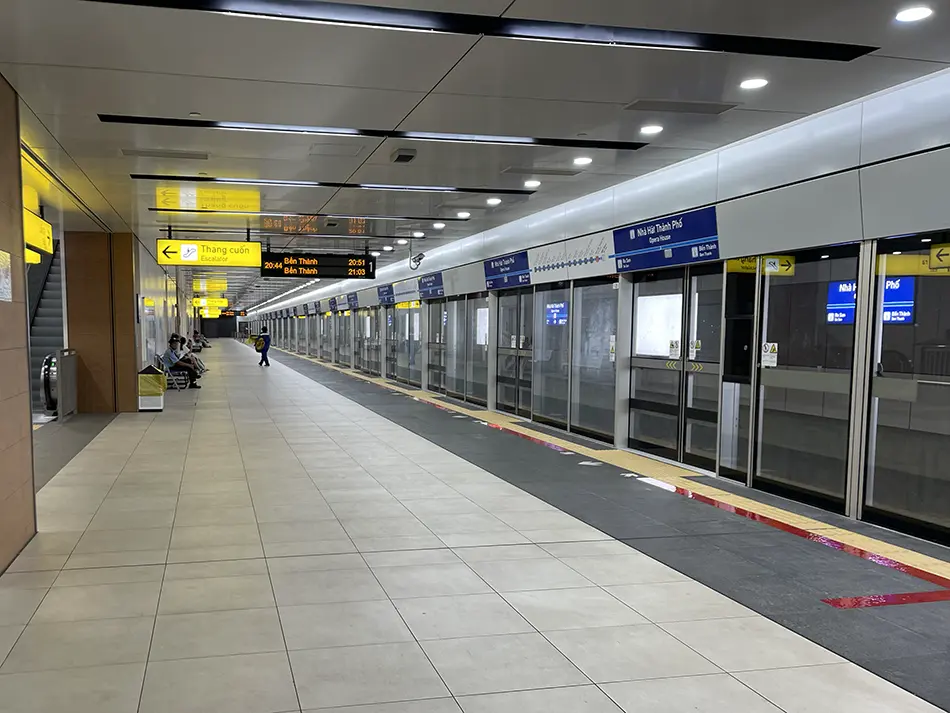
Traveling Within Cities: Urban Transportation Tips for Vietnam
Urban transport in Vietnam can seem chaotic at first glance, but it’s more organized than it appears—and easier to use with the right tools.
In big cities like Hanoi and Ho Chi Minh City, ride-hailing apps are the most convenient option for getting around. These services are widely available and allow you to book either a car or motorbike taxi through your phone, with upfront pricing and cashless payment.
The metro systems in Hanoi and Ho Chi Minh City are now partially operational. While still limited in reach, they offer a quiet, air-conditioned way to experience local life—especially during rush hour. Tickets cost around 8,000–15,000 VND (~$0.30–0.60 USD) depending on the distance.
City buses are improving too. They’re cheap and clean, with many new routes and air-conditioned vehicles. You can plan your journey using Google Maps or the BusMap app, which show real-time schedules and estimated arrival times.
Renting a motorbike is another option, especially in cities like Da Nang or Hoi An. Daily rentals start at around 120,000 VND (~$5 USD). However, a valid international license (IDP) is required, and riding in city traffic can be overwhelming for beginners. Accidents and police checks do happen—so only rent if you’re confident on two wheels.
Good to Know
The main ride-hailing apps in Vietnam are Be, Grab and Xanh SM. Grab has the widest coverage, but we recommend using Xanh SM when available—they operate a fully electric fleet of cars and motorbikes, reducing noise and air pollution without sacrificing comfort or convenience.
Traveling Between Cities: Your Main Options
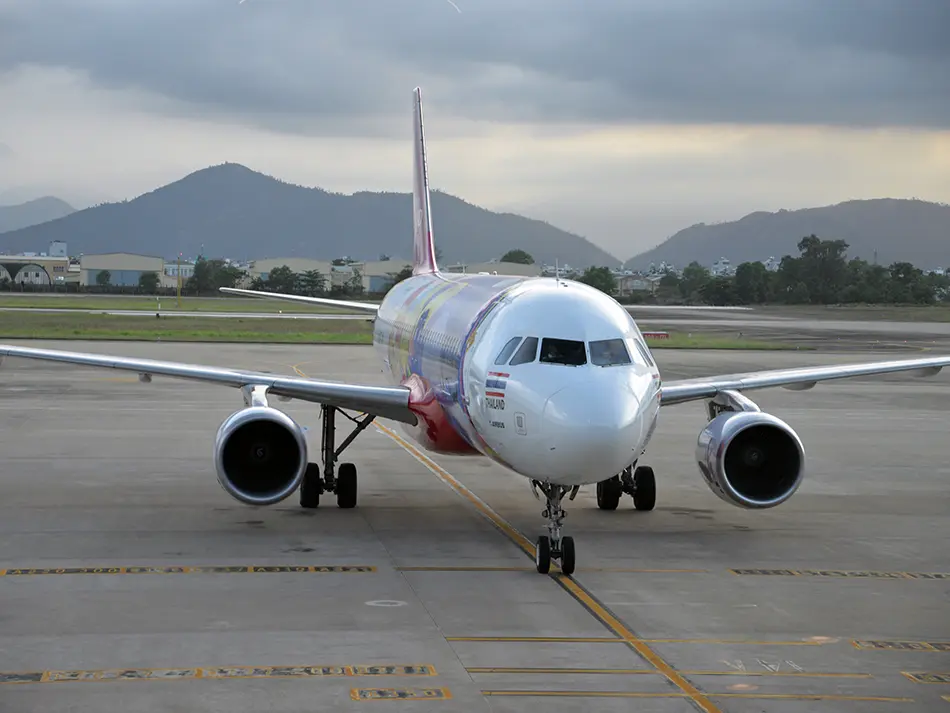
Domestic Flights in Vietnam
Vietnam has an excellent domestic flight network, connecting major cities like Hanoi, Da Nang, Ho Chi Minh City, Hue, and Can Tho. Flying is the fastest way to cover long distances.
Vietjet Air is the main low-cost option. Vietnam Airlines and Bamboo Airways provide a more full-service experience, with added comfort, baggage allowance, and in-flight amenities.
For travelers flying with just a carry-on, domestic flights can be very affordable. One-way tickets typically range from 700,000–1,500,000 VND (~$28–60 USD), depending on the route and how early you book.
Just keep in mind that Vietjet can be strict about carry-on weight. While you might pass through without checks on some flights, other times they’ll weigh your bag at the gate—so it’s best to stay within the allowance to avoid surprise fees.
Good to Know
Low-cost flights in Vietnam are affordable, but delays aren’t uncommon. If you’re catching an international flight or on a tight schedule, plan ahead. It’s safer to fly a day early or book with a major airline to avoid missed connections.

Trains: A Scenic and Relaxed Way to See Vietnam
If you’re looking for a laid-back way to take in Vietnam’s landscapes, train travel is worth considering. The Reunification Express, the main railway line running from Hanoi to Ho Chi Minh City, offers a panoramic view of the country over 1,000 miles (1,700 km). The full ride takes over 30 hours, but most travelers choose shorter segments. Routes like Hue to Da Nang or Nha Trang to Ho Chi Minh City are both scenic and easy to manage.
Trains in Vietnam aren’t fast—they average around 20–30 mph (30–50 km/h)—but they’re punctual, reasonably clean, and surprisingly comfortable. Soft-sleeper cabins (four-berth compartments) are the best option for overnight journeys. Prices vary by distance and class but expect to pay around 600,000–1,200,000 VND (~$24–48 USD) for longer rides.
Don’t miss the Hanoi–Lao Cai route, especially if you’re heading to Sapa. The night train is a classic, with private cabins available through specialized operators for more comfort.
Booking can be done online via official rail portals or apps like Baolau and 12Go, but buying tickets directly at the station is often just as simple, with English-speaking counters in major cities.
Good to Know
Vietnam’s trains offer several classes—hard seat, soft seat, hard sleeper, and soft sleeper, each with or without air-conditioning. For overnight journeys, soft sleeper with AC (4-berth) is the most comfortable. Hard seat is the cheapest but best saved for short daytime rides. Always check the class before booking!
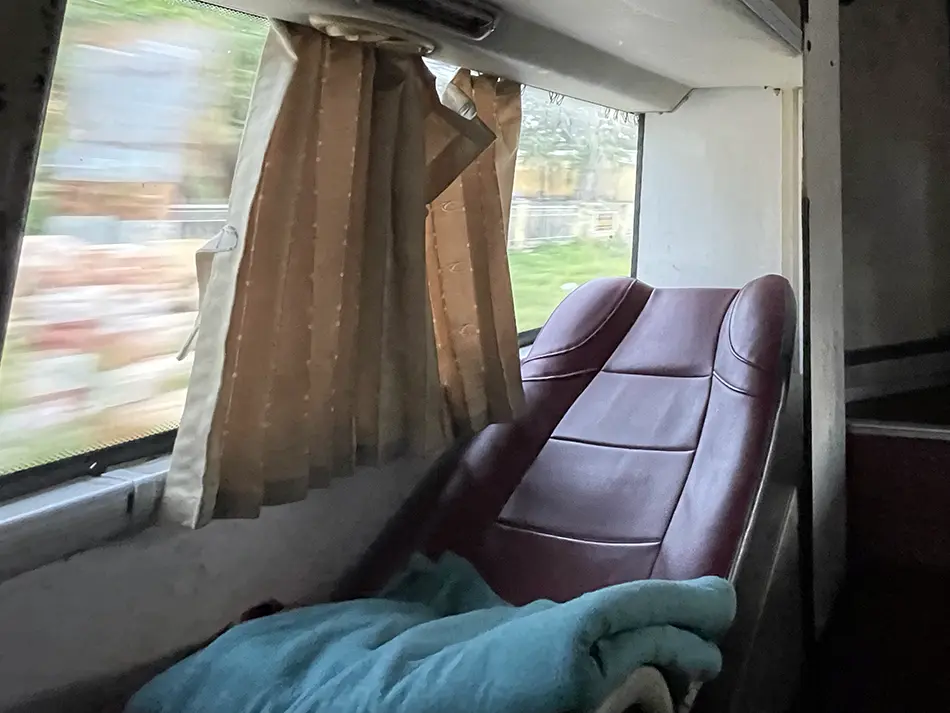
Sleeper Buses: Evolving and Surprisingly Comfortable
Vietnam’s sleeper buses have come a long way. Once seen as a rough option, they’re now among the most popular and evolving ways to travel between cities—especially for budget travelers and night owls.
Today, many companies offer “VIP cabins”—private pods with reclining seats, USB chargers, curtains, and Wi-Fi. Some are spacious enough for two people (though you’ll still need two tickets). Routes like Ho Chi Minh to Da Lat or Hanoi to Phong Nha are frequently served by these modern buses.
However, not all sleeper buses are created equal. Many companies offer a whole range of options with names that sound increasingly extravagant—think “VIP Limousine,” “Super Luxury Limousine,” or even “Extra Super VIP Limousine.”
Despite the flashy labels, the actual layout and comfort level can vary a lot. Some buses have spacious single berths or private pods, while others pack in more passengers with tighter sleeping space. If you’re booking a long ride, it’s always a good idea to ask for photos before confirming your ticket.
Insider Tip
For long sleeper bus rides in Vietnam, always check if the trip is direct. Some routes involve surprise transfers. To avoid frustration, confirm details with the provider—especially for overnight or cross-country journeys.

Renting a Car in Vietnam: With or Without a Driver
Car rental is possible in Vietnam, but it’s not as common as in other countries—mainly due to traffic conditions and licensing rules. For most travelers, the best option is renting a car with a driver. It’s especially useful for day trips or reaching remote areas where public transport is limited. It’s relatively affordable, with daily rates starting around 1,000,000–1,500,000 VND (~$40–60 USD), depending on distance and vehicle type.
Self-driving is more complicated. To legally drive a car in Vietnam, you’ll need a valid Vietnamese license. Alternatively, you can use an International Driving Permit (IDP)—but it must be converted to a local license. This process isn’t very tourist-friendly and can take time. Police checks do happen, and insurance may not cover you without the proper paperwork.
Unless you’re staying long-term or have local experience, it’s safer and more convenient to rent a car with a driver. Most hotels and local agencies can help arrange this quickly and without hassle.

Boats & Ferries: Lesser-Known But Scenic Routes
While boat travel isn’t the main way to get around Vietnam, there are a few routes that offer scenic or practical alternatives.
Of course, Halong Bay cruises are the standout. They range from budget day trips to luxury overnight experiences. But beyond Halong, there are several routes worth noting:
- Phu Quoc ferries: High-speed boats connect the island with ports like Rach Gia and Ha Tien, typically taking 2–3 hours. They’re safe, comfortable, and a fun alternative to flying.
- HCMC to Vung Tau: A speedboat from central Ho Chi Minh City to this beach town takes about 2 hours, offering river views and a relaxed start to a coastal escape.
- Cat Ba Island access: Ferries from Haiphong or Halong are common ways to reach Cat Ba and explore Lan Ha Bay—a quieter alternative to Halong with similar scenery.
- Phu Quy Island: This remote island off the Binh Thuan coast is reachable by boat from Phan Thiet, but crossings can be rough in bad weather. Check forecasts and bring motion sickness meds if needed.
For all boat travel, book tickets at the pier or via official websites, and avoid third-party resellers with unclear pricing.
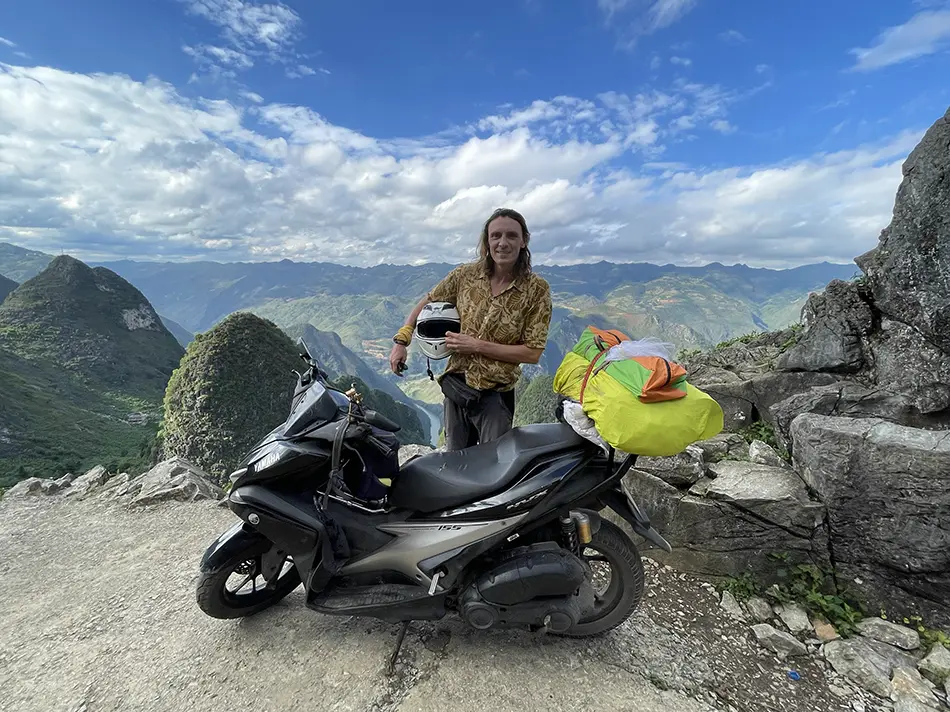
Motorbikes in Vietnam: The Ultimate Freedom Ride
No conversation about how to get around Vietnam is complete without talking about motorbikes. They’re more than just a mode of transport—they’re part of the culture. From daily commutes to bucket-list road trips, traveling by motorbike is the most flexible and adventurous way to explore the country.
For short distances or remote areas like Ha Giang, or Phong Nha, renting a motorbike is often the only practical option. Daily rental rates usually start at 120,000–200,000 VND (~$5–8 USD). Always check the bike’s condition before renting and wear a helmet—it’s required by law.
If you’re dreaming bigger, consider cross-country rides. Many travelers buy a used bike in Ho Chi Minh City and ride north to Hanoi (or the other way around), selling it at the end. Alternatively, some rental companies offer “one-way rentals” that let you pick up in one city and return in another. This is especially popular for the scenic Hai Van Pass—a breathtaking route between Hue and Da Nang that’s doable in a day.
To drive legally, you’ll need a valid International Driving Permit (IDP) with a motorcycle endorsement. Police checks are common, especially in cities, and while many travelers ride without a license, fines and insurance issues can arise in case of accidents.
Good to Know
Motorbike trips in Vietnam are epic—but very weather-sensitive. Before you hit the road, check out Best Time to Visit Vietnam guide to plan around the seasons.

Final Words on Choosing the Right Way to Travel in Vietnam
As you’ve seen, Vietnam offers a mix of transport options that suit different travel styles, budgets, and timeframes. But how do you decide what works best for your trip?
If you’re planning a fast-paced itinerary across major cities, a mix of domestic flights and short taxi or ride-hailing rides will save you time and hassle. For budget-conscious or slow travelers, night sleeper buses are a great way to travel long distances while saving on accommodation.
If you’re into scenic routes or local immersion, try adding a few train segments to your trip. Want something more independent and flexible? Renting a motorbike for regional exploration—or even a full cross-country ride—can be a great option. Just make sure you’re licensed and confident before hitting the road.
We hope this guide has given you a clear starting point on how you’ll shape your Vietnam trip—your route, your pace, and your way.

